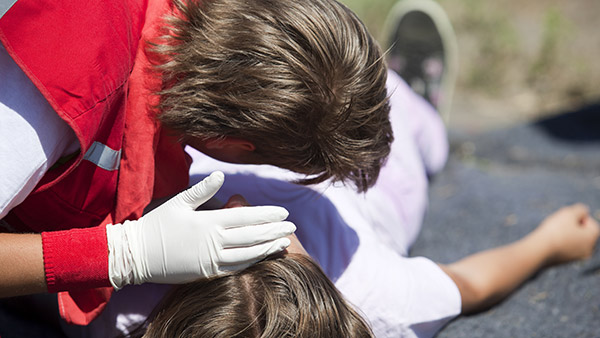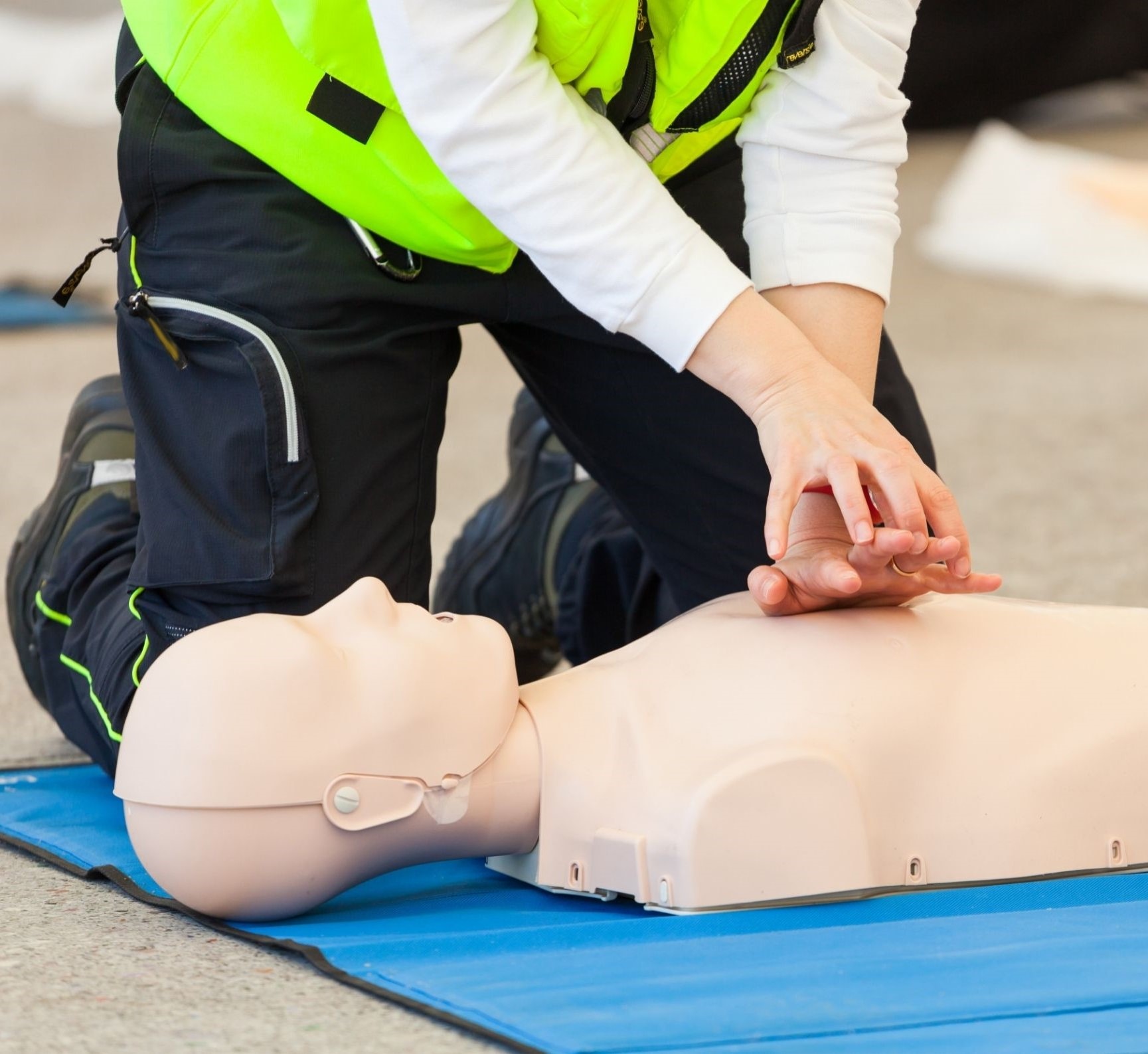Introduction
In a world where emergency situations can strike at any moment, the capacity to respond efficiently can suggest the distinction in between life and death. For many, the thought of encountering a medical emergency brings about feelings of anxiousness and unpredictability. Nonetheless, I found that enrolling in a first help course changed my viewpoint entirely. This short article tells my individual journey of building self-confidence via emergency treatment training, concentrating on how finding out skills such as mouth-to-mouth resuscitation not just complete me to take care of emergency situations yet additionally instilled a newfound sense of self-assurance.
Understanding the Relevance of Emergency Treatment Training
Why Is First Aid Essential?
First aid is usually the initial reaction to a clinical emergency before expert assistance gets here. It incorporates numerous techniques focused on preserving life, stopping wear and tear, and promoting recuperation. But why should everyone think about taking a first aid and CPR course?
Immediate Action: In situations like heart attack, every 2nd matters. Understanding CPR can conserve lives. Empowerment: The understanding obtained from first aid training equips people to act confidently during emergencies. Community Safety: Trained individuals can contribute positively to their areas by supplying immediate assistance.My First Hesitation
When I initially contemplated enrolling in a CPR course, I felt reluctant. Could I truly take care of the gravity of real-life emergencies? Suppose I made errors? These questions pestered my mind, however they likewise motivated me to seek responses via training.
The Primary step: Joining in an Emergency Treatment Course
Choosing the Right Course
Selecting an appropriate first help course is important for acquiring appropriate abilities. Below's what you must think about:
- Certification: Guarantee the training course supplies an identified qualification upon completion. Curriculum: Review topics covered-- from standard first aid to sophisticated CPR techniques. Instructor Qualifications: Try to find knowledgeable teachers with reliable backgrounds.
I eventually picked a credible company offering detailed training that consisted of both academic understanding and sensible sessions.
Preparing for Class
As I planned for my fabulous, I experienced mixed Adelaide first aid training nearby feelings. Enjoyment danced with concern as I pondered what lay ahead.
Gathering Products: I assembled essential products like notebooks and pens yet also left space for an open mind. Setting Objectives: My main objective was basic: finish the training course sensation positive in my abilities.The Training course Experience: Knowing Life-Saving Skills
Engaging Theory Sessions
The first days were invested involved in engaging academic discussions regarding emergency methods and human anatomy pertaining to emergency treatment practices.
Key Subjects Covered:
- Basic Life Assistance (BLS) How to utilize an Automated External Defibrillator (AED) Responding to choking incidents Recognizing indicators of stroke or heart attack
These sessions laid the groundwork for understanding what we would later on exercise hands-on.
Practical Hands-On Training
Nothing compared to the thrill of exercising mouth-to-mouth resuscitation methods on manikins or simulating emergency circumstances with classmates.
Learning Compression Strategies: With every press, my confidence grew as I mastered upper body compressions. Using AEDs: The trainer showed exactly how simple it is to use automated defibrillators, strengthening that any person can tip up in emergencies with appropriate training.Building Self-confidence With Real-Life Scenarios
Simulation Drills: Dealing with Concerns Head-On
One of the most impactful elements of my training entailed substitute drills designed to imitate real-life emergency situations. How did these experiences form my self-confidence?
Types of Drills:
- Responding to unconscious individuals Managing bleeding wounds Handling sensitive reactions
During these drills, I often really felt nervous yet invigorated due to the fact that every situation compelled me out of my convenience area while giving very useful feedback from instructors and peers alike.
Overcoming Anxiousness and Doubt
Initially bewildered by doubt and anxiety, each successful drill tried those sensations:

Certification Day: A Turning Point Achieved
Preparing for the Last Assessment
As we approached qualification day for our first help certificate, expectancy brewed within me-- suppose I really did not pass? Actually, nerves were part of the process; they suggested how much this meant to me!
Study Tips:
- Review notes thoroughly Practice skills repeatedly Engage in group research study sessions for support
With prep work behind CPR Course Morphett Vale me, it was time for assessment day-- a blend of composed examinations and functional demonstrations waited for us.


Celebrating Success
I remember standing happy after obtaining my first aid certification-- a recommendation not just of passing however of development! That moment strengthened both capability in dealing with emergencies and idea in myself.
Applying Skills Beyond Training: Real-Life Applications
Volunteering Opportunities
After finishing my training, I looked for methods to use what I would certainly learned by offering with local companies concentrated on neighborhood health and wellness initiatives.
Participating in health fairs allowed me adequate opportunities to show fundamental first-aid skills. Collaborating with skilled volunteers additionally enhanced my self-confidence as we dealt with different circumstances together.Family Events: Being Prepared
Whether it was household events or exterior experiences, having expertise about emergency treatment ended up being instrumental in making certain security amongst loved ones:
Educating family members concerning recognizing indications of distress enhanced collective preparedness. Using abilities discovered throughout training gave me tranquility knowing that we could manage minor injuries efficiently if needed.Reflections on Structure Confidence Via First Aid Training
Personal Growth Journey
Engaging in this trip has been transformative! The shift from uncertainty concerning taking care of emergencies transformed into conviction sustained by expertise and functional experience needed when confronted with dilemmas head-on!
Enhanced self-confidence became evident even beyond medical circumstances; daily difficulties seemed much less overwhelming too! Understanding that everyone has their battles cultivated compassion towards others experiencing situations themselves-- sharing understanding ends up being crucial here!FAQs About Emergency treatment Training
What is included in a typical first aid course? A typical first aid course generally covers topics such as fundamental life support (BLS), mouth-to-mouth resuscitation methods, wound management, and reacting properly during numerous emergency situations like choking or sensitive reactions.
How long does it take to complete a CPR course? Most CPR courses variety from 4 hours approximately 8 hours depending upon whether they're basic or innovative accreditations; some might supply increased courses too!
Is qualification required for all work involving initial aid? While not every task mandates official certification such as obtaining a first aid certificate, lots of markets-- consisting of healthcare-- favor experienced workers that have valid certifications as First Aid Course Melbourne a result of responsibility concerns.
Can any individual take an emergency treatment and mouth-to-mouth resuscitation course? Definitely! Individuals aged 12 years or older are usually encouraged to enroll no matter prior experience-- everybody gain from being prepared!
How frequently needs to one restore their first-aid certification? Accreditations generally require revival every two years; however, some companies suggest yearly refreshers based upon ability retention degrees observed over time!
What are some usual misconceptions regarding performing CPR? A widespread misconception recommends "just experienced professionals ought to do CPR." Actually however-- laymans trained with licensed programs are empowered & & motivated involve instantly till aid arrives!
Conclusion
Reflecting upon this entire trip encapsulated within "Structure Self-confidence Via Emergency Treatment Training: A Personal Trip," it's clear that engaging with this essential skill set has far-reaching implications past simply conserving lives-- it cultivates durability amid unpredictability while cultivating compassion towards others facing challenges themselves! If you're considering embarking upon your very own path towards ending up being accredited-- don't hesitate! Dive into learning today-- you might just find yourself stunned at just how qualified you absolutely are!